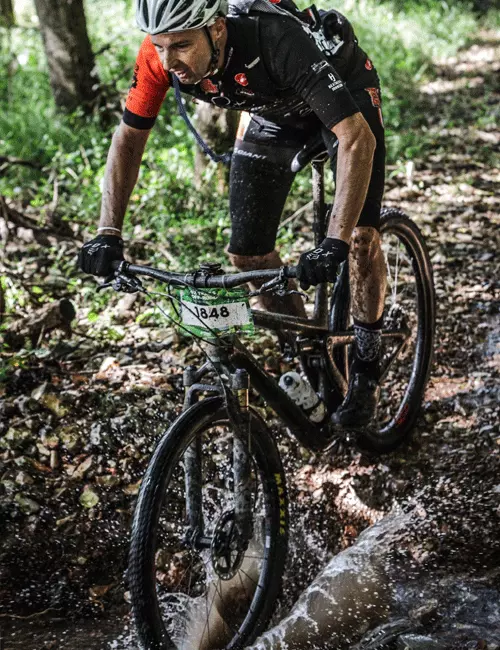July 29, 2021
Rob Anderson had dealt with chronic back issues for over 30 years, but had remained very active and was an avid cyclist. In July of 2015, while playing with his adult son, he fell and triggered more serious back issues. Rob says, “I was racing my son through an obstacle course, slipped and fell and lost the race.”
Rob’s injury revealed he had multiple herniated discs and neither physical therapy nor injections provided relief from the pain.
In 2016, while living in Phoenix, AZ, Rob had a microdiscectomy — a procedure where a surgeon remove portions of the herniated disc to relieve pressure on the spinal nerve column. The procedure failed to relieve any of his pain and he had a second microdiscectomy in early 2017.
“The second procedure failed as well and the pain actually got worse,” says Rob.

Rob's condition had deteriorated severely. “I was taking 25 pills a day trying to manage the pain. I had to remain horizontal most of the time. I ate, work and slept flat on my stomach. I even had to lay flat while riding in a car. I could only stand for five minutes at a time and could only walk 100 feet or so.”
Rob says “The pain shooting down my left leg was so severe that I resigned myself to the fact that I may never be able to return to the activities I love, like mountain biking and skiing.”
Later in 2017, Rob moved to St. Louis and started researching spine surgeons. He was on his third round of physical therapy and injections with no improvement.
Rob found Jacob Buchowski, MD, MS, a Washington University orthopedic spine surgeon at Barnes-Jewish Hospital. “In addition to his credentials, Dr. Buchowski was an avid cyclist. I knew he would understand my need to get back to as much activity as possible.”
“Rob developed a recurrent disc herniation at L5-S1. Since he already had two previous discectomies performed at this level, and they failed to improve with non-operative treatment, I recommended a fusion with a revision discectomy and decompression of the nerves at L5-S1,” says Buchowski adding “Given how motivated he was to get better, I knew Rob would do well with surgery.”
Although concerned about facing more surgery, coincidentally, Tiger Woods was in the news for having the same spine surgery and Rob felt very optimistic.
“[Dr. Buchowski] couldn’t guarantee success because of the degeneration of other discs that could not be fixed by the surgery. Though any relief would be welcome. I was a good candidate in part because most of my pain was down my leg.”
In October of 2017, Rob underwent an uncomplicated posterior spinal fusion, revision discectomy/decompression, and transforaminal interbody fusion (TLIF) at L5-S1.
“Surgery could not have gone any better. We were able to completely free up and take the pressure off the nerve while stabilizing the spine, so I expected a great result,” says Buchowski.
Rob says, “The relief was immediate and within 3 days I was off of all the medication.”

Although physical therapy is not necessary after this type of procedure, Rob was sent home with restrictions and limits on what he could do at three months, six months, nine months and one year post surgery.
Rob closely followed the guidelines and was told nine months post op he could run again, but not yet cycle.
One year post op, Rob competed in a mini triathlon and says Dr. Buchowski was very supportive. “He encouraged me to listen to my body. I still had some pain, but previously the pain had been so acute.”
In 2019, two years post op, Rob decided to compete in the Berryman Trail Epic again. He had competed six years prior. It’s a rigorous 50-mile mountain bike race on the Berryman Trail in the Ozarks. Rob had his fastest time ever, beating his 2013 time by 48 minutes.
“The reputation of Washington University Orthopedics and Dr. Buchowski made the difference for me in deciding to have the surgery. Dr. Buchowski is one of the best surgeons in the field and Megan and the rest of his support team are incredibly focused on getting the best patient outcome.”